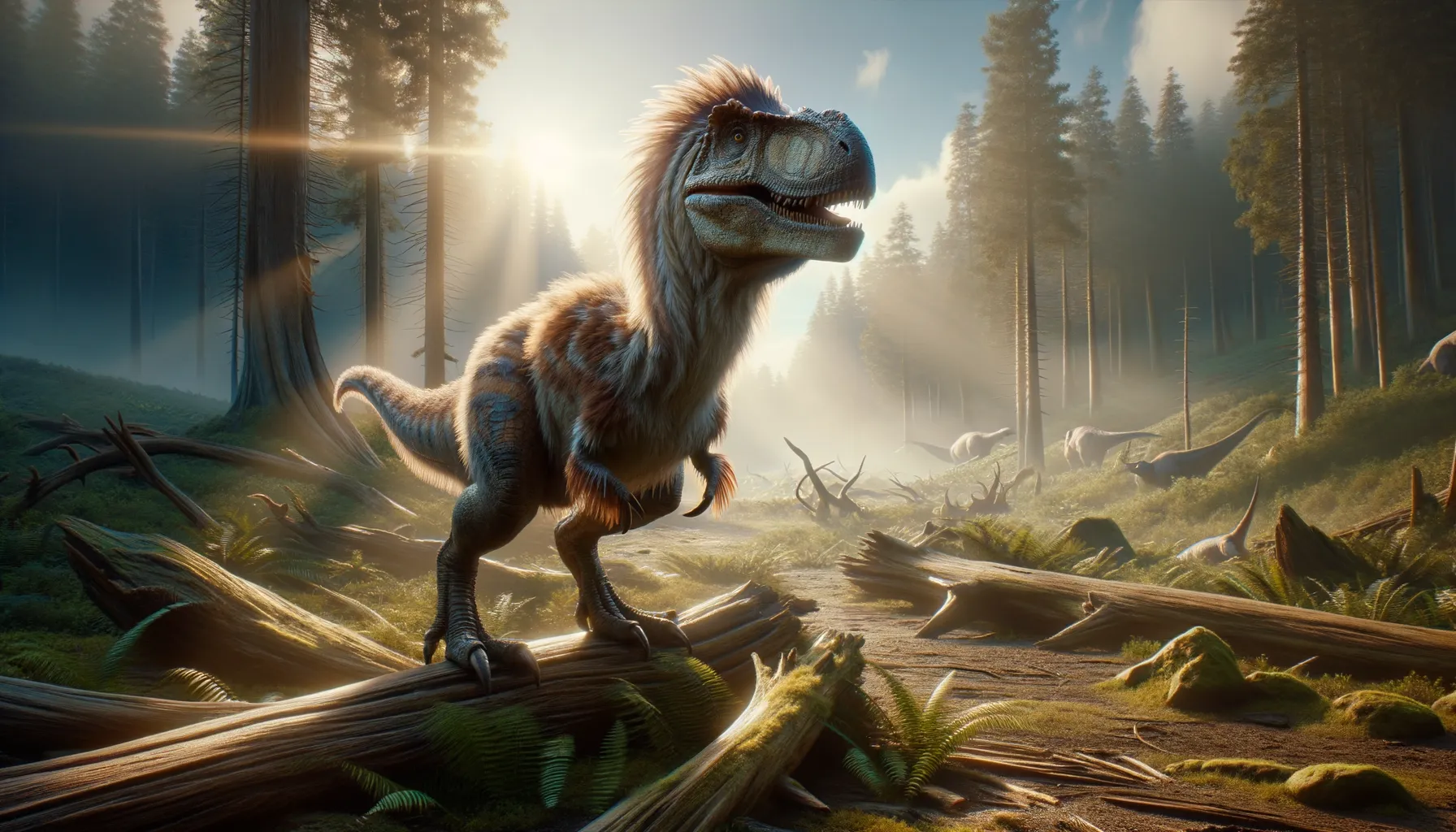
Dilong
Tiny predator with a big impact.
Period
Cretaceous
Length
Up to 6 feet long.
Height
About 1.5 feet tall at the hips.
Weight
Approximately 25 kilograms.
Dilong was a small, feathered tyrannosaur dinosaur that lived during the early Cretaceous period. It is one of the early relatives of the much larger Tyrannosaurus rex. With feathers and a lightweight build, Dilong was well-adapted to a predatory lifestyle. Its discovery provided significant insights into the evolutionary lineage of tyrannosaurs, showing an unexpected diversity in body size and features during the earliest stages of their development.
Diet
Dilong was a carnivore, likely preying on smaller animals and possibly scavenging. Its sharp teeth and agile build suggest it could hunt effectively, although it required faster movements to catch prey.
Hunting
Using its quickness and stealth, Dilong probably hunted smaller dinosaurs and reptiles. It may have also used its small but strong jaws to grasp and quickly incapacitate its prey.
Environmental challenges
During the Cretaceous, Dilong faced challenges such as climate fluctuations and competition for food resources. Its environment included dense vegetation, making it necessary to adapt to a variety of hunting grounds. Predation pressures from larger dinosaurs also influenced its survival strategies.
Speed
Faster than other theropods of similar size.
Lifespan
Estimated around 10 to 20 years.
First discovery
Found in northeastern China in 2004.
Fun Facts
- Dilong was a small, feathered dinosaur that lived about 126 million years ago during the early Cretaceous period.
- The name Dilong means 'emperor dragon' in Chinese, reflecting its discovery in China and its relation to the Tyrannosaurus rex.
- Despite being related to the mighty T. rex, Dilong was much smaller, measuring only about 1.6 meters (5 feet) long.
- Dilong had feathers, making it one of the earliest members of the Tyrannosauridae family to show evidence of such plumage.
- Dilong's discovery has provided scientists with valuable insights into the evolution of feathers in dinosaurs.
- Dilong preyed on small animals, using its agility and speed, since it was too small to compete with larger predators.
- Fossils of Dilong are helping paleontologists understand more about the diversity and adaptations of early tyrannosaurs.
Growth and Development
Dilong's growth likely followed a faster pattern compared to its larger relatives. It may have reached maturity at a younger age to reproduce and sustain its population. The presence of feathers suggests that these early tyrannosaurs potentially used them for temperature regulation during their growth.
Habitat
Dilong lived in a forested environment that was rich in diverse plant and animal life. These conditions provided ample camouflage and hunting opportunities. The area was warm and humid, supporting a range of ecosystems that included rivers and vegetation-dense areas.
Interaction with other species
As a small predator, Dilong had to navigate interactions with both prey and larger predators. It may have avoided direct competition with larger tyrannosaurs by adopting different hunting techniques. Dilong might have also scavenged from prey killed by others.
Natural lifespan
Its natural lifespan was about 10 to 20 years.
Reproduction
Dilong likely laid eggs, and like many other dinosaurs, these were probably cared for in nesting colonies. Fossil evidence suggests parental care might have been a strategy to protect their young from predators.
Social behaviour
While specific social behaviors are unknown, Dilong may have lived in small groups or pairs during mating seasons. Such social structures could have helped in cooperative hunting or in safeguarding their young.
Fossil locations
Dilong fossils were primarily discovered in the Yixian Formation in northeastern China. This area is renowned for its rich array of well-preserved dinosaur fossils, contributing extensively to our understanding of early Cretaceous ecosystems.
